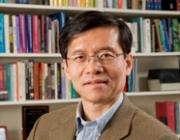Changes in the Determinants of Marriage Entry in Post-Reform Urban China
Type
Using population intercensus and national survey data, we examine marriage timing in urban China spanning the past six decades. Descriptive analysis from the intercensus shows that marriage patterns have changed in China. Marriage age is delayed for both men and women, and prevalence of nonmarriage became as high as one-quarter for men in recent birth cohorts with very low levels of education. Capitalizing on individual-level survey data, we further explore the effects of demographic and socioeconomic determinants of entry into marriage in urban China over time. Our study yields three significant findings. First, the influence of economic prospects on marriage entry has significantly increased during the economic reform era for men. Second, the positive effect of working in the state-owned sector has substantially weakened. Third, educational attainment now has a negative effect on marriage timing for women. Taken together, these results suggest that the traditional hypergamy norm has persisted in China as an additional factor in the influences of economic resources on marriage formation.

